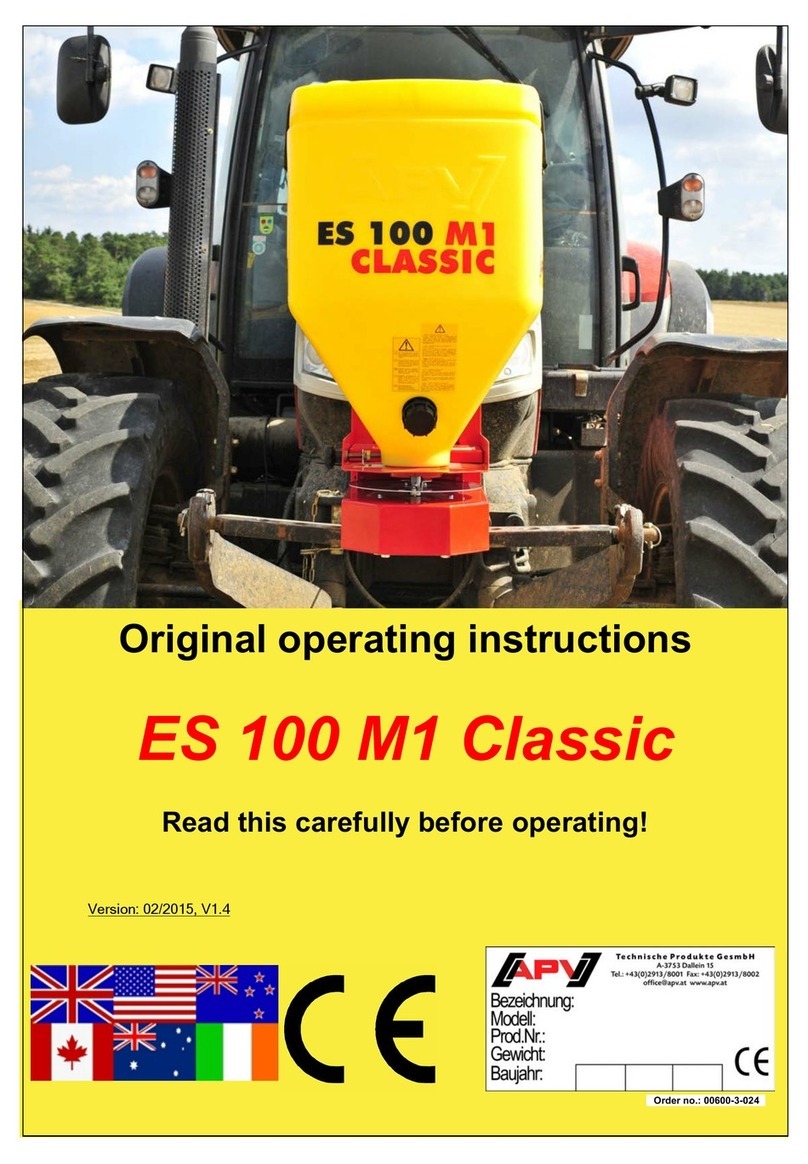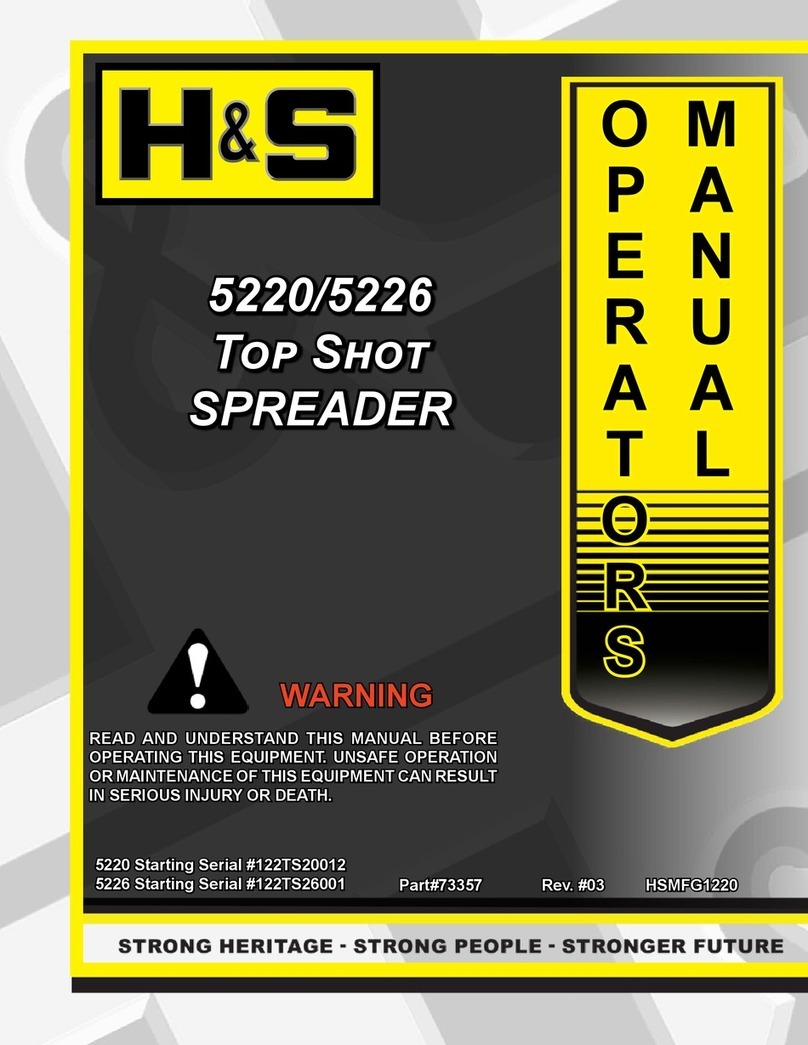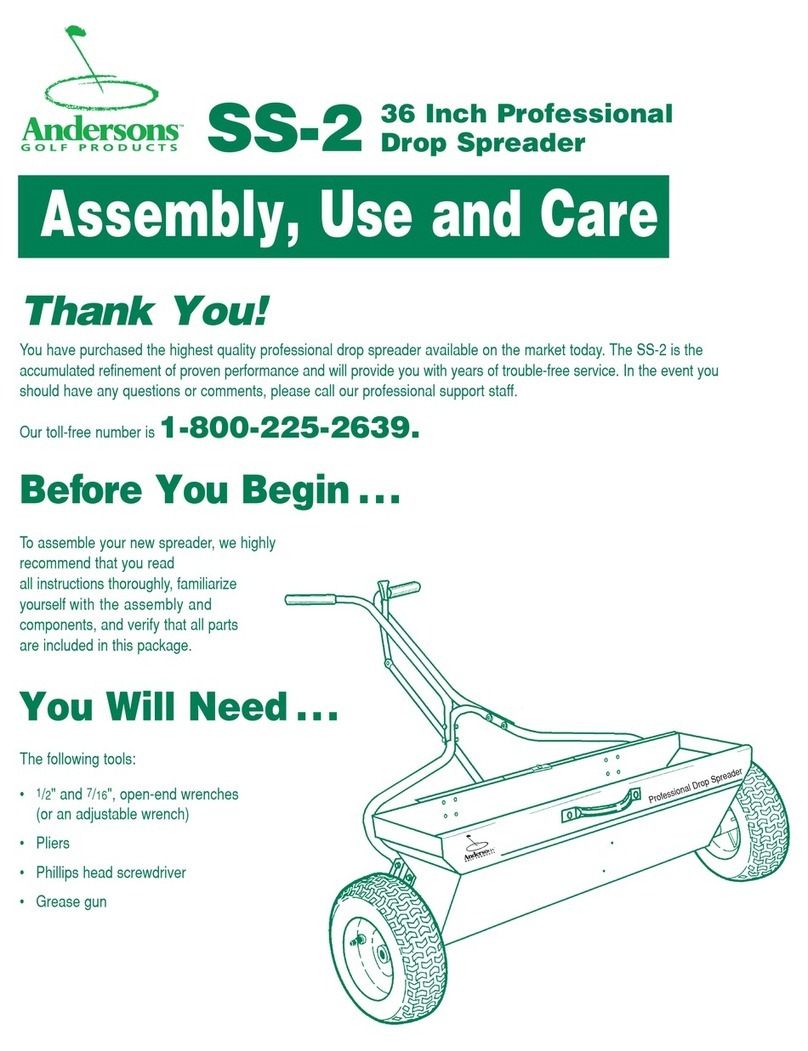VII. NOISE AND
VIBRATIONS
Average noise level during the spreader work does not exceed 79 dB(A). Measurement of
the noise level was carried out during a standstill, pursuant to attachment D of the PN-EN 1553:2002
standard. While working with the spreader, the operator should sit in the tractor’s cab, or wear
hearing protection.
There are no dangers caused by vibrations while working with the spreader as the operator’s
workplace is located in the tractor’s cabin, where the seat is amortized, and it has a proper ergonomic
shape. The value of vibrations applied to the operator’s body does not exceed 0,6 m/s2.
VIII. OPERATING MANUAL
1. General information
This Operating Manual describes manure spreaders with the following symbols:
Tytan 11 premium, Tytan 11 premium td, Tytan 13 premium td, Tytan 18 premium td. Tytan 11
“premium” spreaders are machines traveling on a single axis, while Tytan 11, 13 and 18
spreaders - “premium td” series - travel on an amortized tandem system. A working part of the
machines mentioned above is an adapter utilized for spreading organic material.
The spreader can be equipped with three types of the adapter. A vertical four-roll adapter, a
vertical two-roll adapter, and a horizontal-disc adapter. The spreader is first of all intended for
even spreading of manure, peat and compost. What is more, is can be used as a trailer with
automatic unloading for crops and other materials transportation, both within a holding and on
public roads. The spreader can work together with tractors that are equipped with an upper or
lower catch for single-axis trailers. Manufacturer’s guarantee conditions for fault-free operation of
the machinery, and information about units that carry out guarantee repairs are provided in the
guarantee card attached to a new spreader. Principles of providing users with spare parts are
described in the Spare parts catalog.
2. Equipment.
When purchasing the spreader check for completeness of the equipment,
including:
1. Operating manual
2. Guarantee card
3. Power take-off shaft
3. Intended use
The manure spreader is a universal multi-functional agricultural machine, which can
be used for the following works, e.g.:
a) spreading of manure, peat or compost, with fertilization doses
reaching 6-60 tons per hectare, depending on the kind and
quality of soil and type of cultivated plants (fig. 1).
b) transportation of crops and agricultural products (potatoes,
beetroot, seeds, cereals, etc.) with a possibility of automatic
unloading with a floor conveyor.



























